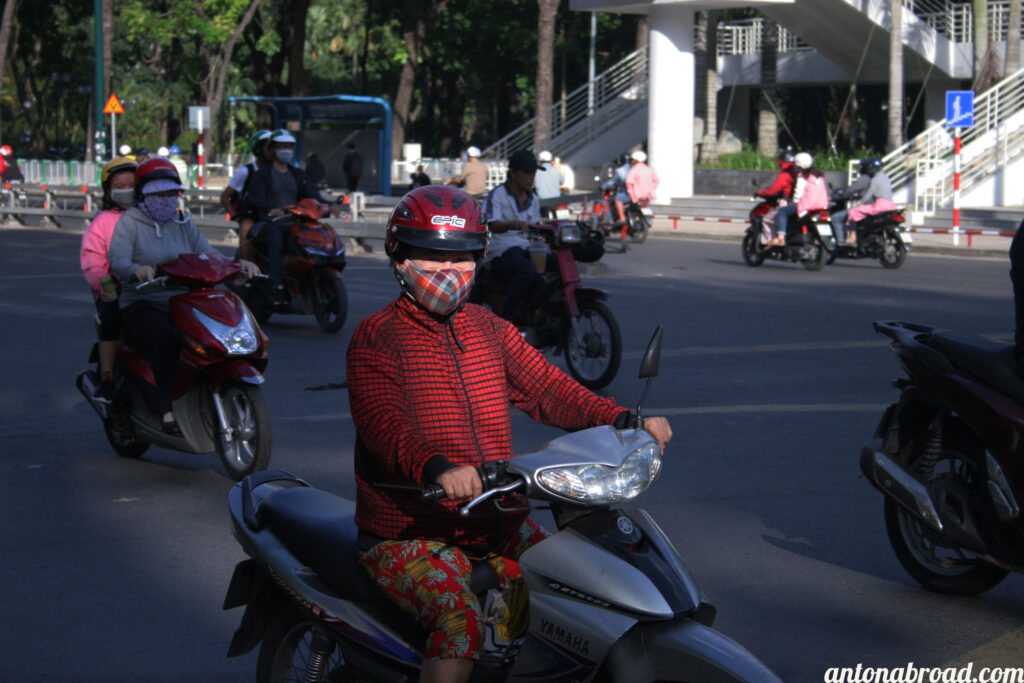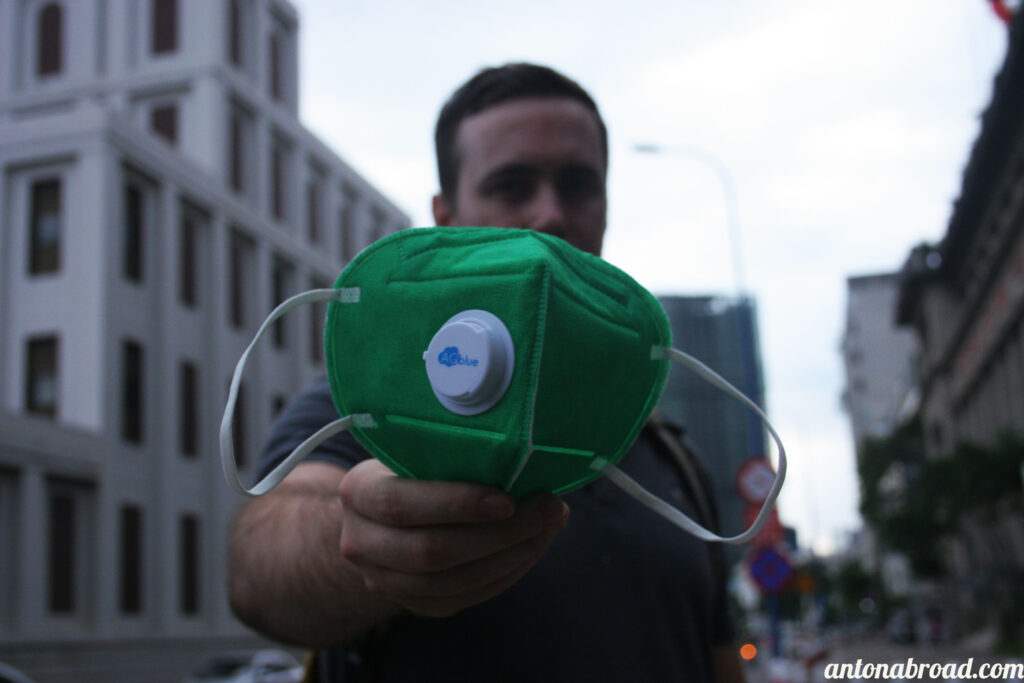Decades of rapid economic growth has been a blessing for Vietnamese cities, as well as a curse in disguise.
Asia is where most of the economic growth will happen, experts say, as Chinese villages turn into megacities and similar phenomena become evident across the continent, including Vietnam.
The World Economic Forum has predicted that the next billion members of the world’s middle class will come from Asia.
However, these impressive figures, the higher living standards and rising wealth generation have been accompanied by a disaster of unimagined proportions that both citizens and policymakers are not paying sufficient attention to, in terms of long term ameliorative measures.
There is literature aplenty on the scale of the problems caused by rising levels of air pollution across the country caused by heavy industries and rapidly increasing number of motorized vehicle owners.
Hanoi, Vietnam’s capital, only had 38 days of “clear air” (an AQI below 100) in 2017, with average pollution four times higher than those deemed acceptable by the World Health Organization’s air quality guidelines.
The Ministry of Natural Resources and Environment (MoNRE) has said that traffic is responsible for about 70 percent of air pollution in Hanoi.
That air pollution is becoming a serious threat in many Southeast Asian nations has been evident for some time now. The WHO recently estimated that 4.2 million premature deaths globally are linked to ambient air pollution.
Air pollution is a factor in more than 24 percent of the worldwide deaths from stroke, 29 percent of deaths from lung cancer, and about 50 percent of respiratory deaths and diseases.
Fine matter
The most threatening facet of air pollution is fine particulate matter, often referred to as PM2.5, caused by exhaust emissions from vehicles, factories, fires, etc. Particles (smaller than 2.5 micrometers) can get deep into the lungs and even into our bloodstream. The length of exposure, concentration, as well as a person’s age, are all factors related to how particulate matter can negatively impact health.
Short-term effects include irritation in the eyes, nose, and throat, headaches, nausea, allergic reactions or upper respiratory infections such as bronchitis and pneumonia.
Long-term health effects vary from chronic respiratory diseases, lung cancer, heart diseases, to damage in the brain, nerves, liver, or kidneys.
The danger of air pollution is invisible and insidious, affecting even very healthy people. People who are most at risk, experts say, are children, fetuses, people with chronic respiratory and pulmonary illnesses, and the elderly.
Facial masks – false sense of security
According to the HCMC Environment Protection Department, the city has the highest number of motorbikes in the world – 7.3 million – and more than 600,000 cars, which consume in total over four million liters of fuel a day.
Saigon’s particulate pollution is above the worldwide average, but below average in comparison with other Southeast Asian cities like Bangkok, Manila or Jakarta, which suffers the region’s worst air pollution.
Most people in Vietnam aren’t aware of the health risks from ambient air pollution. Education about effective protection and best practices against pollution exposure has only reached a small minority of Vietnam’s population.
Most Vietnamese people driving on the roads wear cotton masks, which are effective against the sun’s UV-rays, but are not effective against particulate matter, filtering less than 10 percent of PM2.5 and don’t seal properly.

Another popular choice for motorbike riders in Vietnam are surgical masks. Mainly used in hospitals, these masks are designed to keep illness from spreading as liquid droplets, but aren’t effective at filtering PM2.5 because they don’t seal completely around the face. Additionally, these masks are discarded quickly and contribute to plastic waste. Both cotton and surgical masks provide a false sense of security for people concerned about air quality.
So, what offers the best protection against air pollution?
The Chinese experience
Tom Druk, co-founder of AQBlue, who has lived with Asia’s rising air pollution levels and worked to reduce it for over five years, said: “When outside on a polluted day, the most effective way to lower your pollution exposure is by wearing a particle filtering mask.
“An effective mask should seal around your face and contain an electrostatic filter, which can filter nearly 99 percent of PM2.5, polluted air particles. Electrostatic filters, originally designed for work-safety masks in the 1990s, are highly effective at filtering PM2.5,”
Tom first experienced noticeable, adverse health effects from air pollution while he was looking for an apartment in Beijing, China, on an afternoon in 2013.
“That day looked really foggy, visibility was maybe 200 meters and a white sheet covered most of the skyscrapers in the CBD. After I spent the day visiting apartments, I went back to my hotel and felt an irritation deep down in my lungs. When I woke up the next morning, it felt as if someone was sitting on my chest. While living in Beijing over that first winter, I had to shower multiple times a day or I would get acne like I was back in high school!”
In 2013, China experienced the worst air pollution ever registered since 1961, when nearly half of China was hit by smog. As a consequence, schools were closed, a system of alternate driving days for private cars was developed, and many construction projects were suspended.
Due to rising awareness, the demand for effective pollution masks increased rapidly in China and Druk founded AQblue with the goal of getting high quality particle filtering masks to as many people as possible.
“In the beginning, we [AQblue] were using a Business-to-Business, social enterprise model. We manufactured and printed corporate branded masks with the intention that companies would hand them out for free. Unfortunately, the cooperation didn’t work fast enough to keep up with changing pollution patterns, and we created our own masks, available directly to consumers, using our experience as mask manufacturers. AQblue is not reinventing the wheel, we are just improving a 30-year-old technology to provide good, effective air pollution masks for regular people.”

The AQI (Air Quality Index) was at a critical high of “400” or “Hazardous” on the day Druk was looking for an apartment in Beijing. According to the U.S. Environmental Protection Agency, an AQI of just 100 is the metric deemed unhealthy for sensitive groups.
Nowadays, there are many ways to check local AQI levels. The Airvisual-App for smartphones allows people to monitor real-time air quality all over the world.
And once this is done, people can understand the extent of the problem facing Vietnam.
Air pollution – Vietnam’s “silent killer”
According to the WHO, six out of 10 diseases with the highest mortality rate in Vietnam are linked to ambient air pollution.
Le Viet Phu, an economist with Fulbright University Vietnam, said that the annual number of deaths due to air pollution will rise up to over 100 000 by 2035.
Furthermore, economic losses due to early deaths caused by air pollution accounted for an estimated 5-7 percent of Vietnam’s GDP or $11.4-15.9 billion last year, with at least 40,000 people dying of diseases related to air pollution.
Pressured by the WHO and organizations that support people who suffer from respiratory diseases, the Vietnamese government recently launched a national action plan on controlling air quality until 2020 with a vision to 2025.
The plan assigns ministries and agencies with implementing many solutions to curb air pollution, including green production, investment in new, green technologies, installing additional air monitoring stations, and limiting the use of obsolete technologies in production.
However, both residents and policymakers cannot be satisfied with steps taken thus far.
Just as products like air pollution masks with electrostatic filters are mere temporary solutions for a serious problem, policies such as those enumerated above are not going to be effective in the long run.
In the long run, Vietnamese cities need large infrastructure changes on an emergency basis, whether it is the promotion of public transportation, reduction of private transportation means, scaling back industrial agriculture and livestock farming to organic production, or avoiding dangerous technologies like GMOs.
If this does not happen soon, Vietnam’s megacities will not be able to foster a healthy lifestyle for their residents.
This story was featured at: vnexpress.net/news/news/perspectives/slowly-but-surely-an-invisible-poison-is-choking-vietnamese-cities-3875990.html